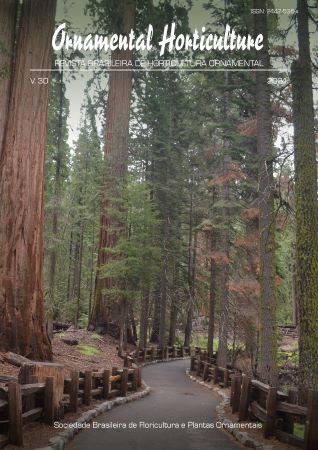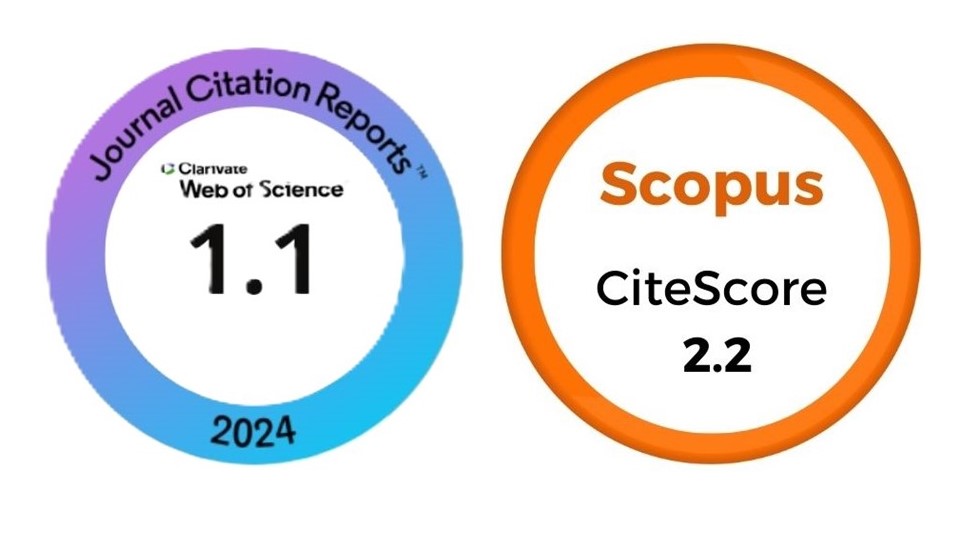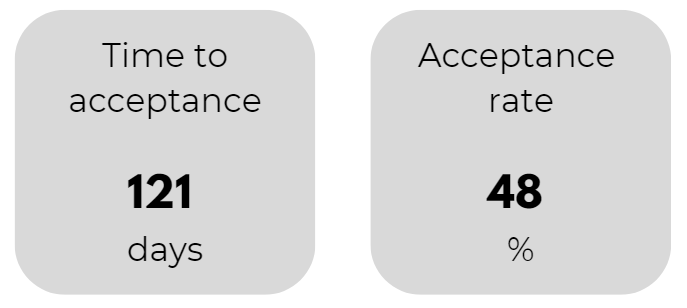Quantitative exploration of arbuscular mycorrhiza colonization in Dactylorhiza hatagirea (D.Don) Soó in Kashmir Himalaya
DOI:
https://doi.org/10.1590/2447-536X.v30.e242723Keywords:
arbuscular mycorrhizal fungi, nitrogen, nutrient cycling, orchid himalaia, phosphorusAbstract
Mycorrhizae, exclusively associated with orchids, play a crucial role in plant growth, competitive interactions and pathogen protection. This study aimed to quantitatively assess the arbuscular mycorrhizal fungi (AMF) colonization rate in Dactylorhiza hatagirea at three sites in Kashmir Himalaya: Gulmarg, Sonamarg, and Pahalgam. Additionally, it examines soil parameters such as temperature, precipitation, pH, organic carbon, phosphorus, potassium and nitrogen. The root tips were collected at a depth of 0-20 cm. Samples were stored in sterilized polythene bags, refrigerated at 4±1 °C. Our results showed a significant variation in mycorrhizal colonization across three sites, with Pahalgam showing the highest at 78%, followed by Gulmarg at 73%, and Sonamarg at 57%. Principal Component Analysis (PCA) revealed 69.5% of the variation in environmental and soil variables. Positive correlations were observed among pH, nitrogen, potassium, and organic carbon, whereas phosphorus was negatively correlated with potassium and nitrogen. Gulmarg and Pahalgam were similar in soil characteristics, while Sonamarg exhibited distinct differences. Phosphorus positively correlated with Sonamarg but negatively with Pahalgam and Gulmarg, while other soil parameters showed opposite trends. The study emphasizes the significance of AMF colonization in understanding and enhancing plant-microbe interactions in terrestrial ecosystems, highlighting its role in nutrient cycling and the assimilation of essential elements like phosphorus and nitrogen.
Downloads
References
ABDALLA, M.; BITTERLICH, M.; JANSA, J.; PÜSCHEL, D.; AHMED,M. A. The role of arbuscular mycorrhizal symbiosis in improving plant water status under drought. Journal of Experimental Botany, v.74, n.16, p.4808-4824, 2023. https://doi.org/10.1093/jxb/erad249
BABIKOVA, Z.; GILBERT, L.; BRUCE, T.; DEWHIRST, S.Y.; PICKETT, J.A.; JOHNSON, D. Arbuscular mycorrhizal fungi and aphids interact by changing host plant quality and volatile emission. Functional Ecology, v.28, p.375-385, 2014. https://doi.org/10.1111/1365-2435.12181
BEGUM, N.; QIN, C.; AHANGER, M.A.; RAZA, S.; KHAN, M.I.; ASHRAF, M.; AHMED, N.; ZHANG, L. Role of arbuscular mycorrhizal fungi in plant growth regulation: Implications in abiotic stress tolerance. Frontiers Plant Science, v.10, p.1068, 2019. https://doi.org/10.3389/fpls.2019.01068
BERRUTI, A.; LUMINI, E.; BALESTRINI, R.; BIANCIOTTO, V. Arbuscular mycorrhizal fungi as natural biofertilizers: let’s benefit from past successes. Frontiers in Microbiology, v.6, p.1559, 2016. https://doi.org/10.3389/fmicb.2015.01559
BHANTANA, P.; RANA, M.S.; SUN, X.C.; MOUSSA, M.G.; SALEEM, M.H.; SYAIFUDIN, M.; HU, C.X. Arbuscular mycorrhizal fungi and its major role in plant growth, zinc nutrition, phosphorous regulation and phytoremediation. Symbiosis, v.84, p.19-37, 2021. https://doi.org/10.1007/s13199-021-00756-6
CHIU, C.H.; PASZKOWSKI, U. Mechanisms and impact of symbiotic phosphate acquisition. Cold Spring Harbor Perspectives in Biology, v.11, n.6, a034603, 2019. https://doi.org/10.1101/cshperspect.a034603
IQBAL, B.; LI, G.; ALABBOSH, K.F.; HUSSAIN, H.; KHAN, I.; TARIQ, M.; AHMAD, N. Advancing environmental sustainability through microbial reprogramming in growth improvement, stress alleviation, and phytoremediation. Plant Stress, p.100283, 2023. https://doi.org/10.1016/j.stress.2023.100283
KHALIQ, A.; PERVEEN, S.; ALAMER, K.H.; ZIA UL HAQ, M.; RAFIQUE, Z.; ALSUDAYS, I.M.; ALTHOBAITI, A.T.; SALEH, M.A.; HUSSAIN, S.; ATTIA, H. Arbuscular mycorrhizal fungi symbiosis to enhance plant–soil interaction. Sustainability, v.14, p.7840, 2022. https://doi.org/10.3390/su14137840
LEMANCEAU, P.; MARON, P.A.; MAZURIER, S.; MOUGEL, C.; PIVATO, B.; PLASSART, P.; WIPF, D. Understanding and managing soil biodiversity: a major challenge in agroecology. Agronomy for Sustainable Development, v.35, p.67-81, 2015. https://doi.org/10.1007/s13593-014-0247-0
LI, W.; LI, W.B.; XING, L.J.; GUO, S.X. Effect of arbuscular mycorrhizal fungi (AMF) and plant growth-promoting rhizobacteria (PGPR) on microorganism of phenanthrene and pyrene contaminated soils. International Journal Phytoremediation, v.25, p.240-251, 2022. https://doi.org/10.1080/15226514.2022.2071832
MBODJ, D.; EFFA-EFFA, B.; KANE, A.; MANNEH, B.; GANTET, P.; LAPLAZE, L.; DIEDHIOU, A.; GRONDIN, A. Arbuscular mycorrhizal symbiosis in rice: Establishment, environmental control and impact on plant growth and resistance to abiotic stresses. Rhizosphere, v.8, p.12-26, 2018. https://doi.org/10.1016/j.rhisph.2018.08.003
PEÑUELAS, J.; SARDANS, J. Global change and forest disturbances in the Mediterranean basin: Breakthroughs, knowledge gaps, and recommendations. Forests, v.12, n.5, p.603, 202. https://doi.org/10.3390/f12050603
PHILLIPS, J.M.; HAYMAN, D. S. Improved procedures for clearing roots and staining parasitic and vesicular-arbuscular mycorrhizal fungi for rapid assessment of infection. Transactions of the British mycological Society, v.55, n.1, p.158, 1970. https://doi.org/10.1016/S0007-1536(70)80110-3
QIN, Z.; ZHANG, H.; FENG, G.; CHRISTIE, P.; ZHANG, J.; LI, X.; GAI, J. Soil phosphorus availability modifies the relationship between AM fungal diversity and mycorrhizal benefits to maize in an agricultural soil. Soil Biology and Biochemistry, v.144, p.107790, 2020. https://doi.org/10.1016/j.soilbio.2020.107790
REZÁCOVÁ, V.; CZAKÓ, A.; STEHLÍK, M.; MAYEROVÁ, M.; ŠIMON, T.; SMATANOVÁ, M.; MADARAS, M. Organic fertilization improves soil aggregation through increases in abundance of eubacteria and products of arbuscular mycorrhizal fungi. Science Reports, v.11, p.12548, 2021. https://doi.org/10.1038/s41598-021-91653-x
ROBERTS, D.P.; MATTOO, A.K. Sustainable agriculture - Enhancing environmental benefits, food nutritional quality and building crop resilience to abiotic and biotic stresses. Agriculture, v.8, n.8 2018. https://doi.org/10.3390/agriculture8010008
SABOOR, A.; ALI, M.A.; HUSSAIN, S.; EL ENSHASY, H. A.; HUSSAIN, S.; AHMED, N.; DATTA, R. Zinc nutrition and arbuscular mycorrhizal symbiosis effects on maize (Zea mays L.) growth and productivity. Saudi Journal of Biological Sciences, v.28, n.11, p.6339-6351, 2021. https://doi.org/10.1016/j.sjbs.2021.06.096
SHARMA, K.; GUPTA, S.; THOKCHOM, S.D.; JANGIR, P.; KAPOOR, R. Arbuscular mycorrhiza-mediated regulation of polyamines and aquaporins during abiotic stress: deep insights on the recondite players. Frontiers in Plant Science, v.12, p.1072, 2021. https://doi.org/10.3389/fpls.2021.642101
SHRIVASTAVA, A.; JAIN, S. Dactylorhiza hatagirea (D. Don) Soo: Himalayan marsh orchid. In: Immunity Boosting Medicinal Plants of the Western Himalayas, 145-171. 2023 https://doi.org/10.1007/978-981-19-9501-9_6
SIDDIQUI, Z.A.; PICHTEL, J. Mycorrhizae: An overview. In: Mycorrhizae: Sustainable Agriculture and Forestry; Berlin/Heidelberg: Springer, 2008. p.1-35. https://doi.org/10.1007/978-1-4020-8770-7
UPADHAYAY, V.K.; SINGH, J.; KHAN, A.; LOHANI, S.; SINGH, A.V. Mycorrhizal mediated micronutrients transportation in food-based plants: A biofortification strategy. Mycorrhizosphere and Pedogenesis, p.1-24, 2019. https://doi.org/10.1007/978-981-13-6480-8_1
WAHAB, A.; MUHAMMAD, M.; MUNIR, A.; ABDI, G.; ZAMAN, W.; AYAZ, A.; REDDY, S.P.P. Role of arbuscular mycorrhizal fungi in regulating growth, enhancing productivity, and potentially influencing ecosystems under abiotic and biotic stresses. Plants, v.12, n.17, p.3102, 2023. https://doi.org/10.3390/plants12173102
ZAVAHIR, J.S.; WIJEPALE, P.C.; SENEVIRATNE, G. Role of microbial communities in plant–microbe interactions, metabolic cooperation, and self-sufficiency leading to sustainable agriculture. Role of Microbial Communities for Sustainability, p.1-35, 2021. https://doi.org/10.1007/978-981-15-9912-5_1
Downloads
Published
Issue
Section
License
Copyright (c) 2024 Ornamental Horticulture

This work is licensed under a Creative Commons Attribution 4.0 International License.








